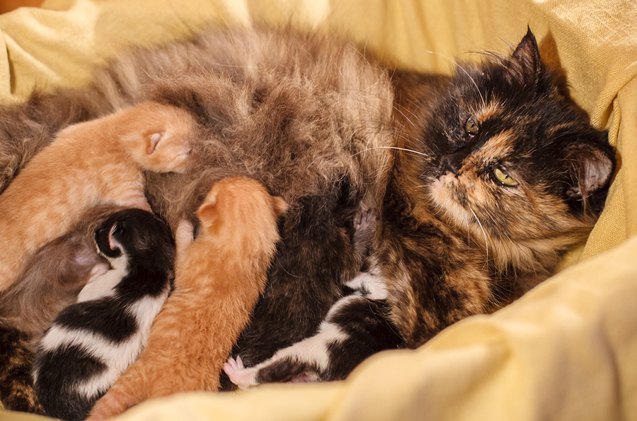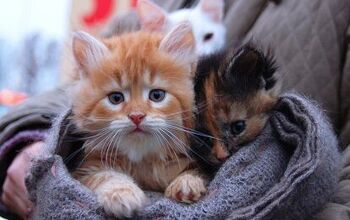Understanding Your Cat’s Heat Cycle
When a woman is PMSing, we know to bring her chocolate and watch romantic comedies. What do you do when your cat is going through her heat cycle though? What does she need? How can you help? We’ve got the answers for you.
What is a Heat Cycle?
A cat’s heat cycle is when she is fertile. Cats, like a variety of other mammals, are on the estrus cycle. This makes it different from the female menstrual cycle; while humans shed the mucus lining after a short period of fertility, mammals (including cats) reabsorb their endometrium in their heat cycle. That means that while a cat may bleed during her heat cycle, it is not comparable to a woman’s period. Actually, it’s pretty much the opposite; women aren’t fertile during their period, whereas female cats are only fertile while in heat.
Related: Reasons Why You Should Spay Or Neuter Your Cat
If your cat isn’t spayed, then she will go through her heat cycle every couple of weeks (1 to 3 on average), so it’s best to be prepared. Your cat will start going through heat cycles once she has reached puberty, which usually happens at about six months, though the age of puberty varies depending on the time of year.
Here’s the fun thing about cats: they are seasonally polyestrous. Yes, that’s as interesting as it sounds; your cat will have multiple heat cycles during the breeding season. A heat cycle can last up to a week, and then occur as often as every other week. Breeding season can be busy for your cat.
What, you ask, is the breeding season? It varies according to a bunch of environmental factors, but basically, in the Northern Hemisphere, cats usually cycle from January until late fall. If you live closer to the equator, your cat’s heat cycle might last all year!
Signs Your Cat is in Heat
During a cat’s heat cycle, you’ll notice that your cat’s behaviour changes. Although it would be scientifically inaccurate to compare it to PMSing, the behaviour change is similar. The most important change that many owners comment on is that their cat becomes more affectionate and in some cases, even demanding. They want more physical contact, such as petting, and will rub against their owners and constantly demand attention. Many times they look for any stimuli, so they might also roll on the floor or scratch more.
Related: 5 Awesome Spay and Neuter Feral Cat Programs
The other noticeable behaviour change is their attempts to attract available male cats. In their attempt to attract mates, female cats will be more vocal, even yowl. They might urinate more, as cats, like dog, can communicate through their urine. If your cat is an indoor cat, then she will probably try and escape as well, since she will be searching for that release.
What Can You do About it?
The best thing to do is to spay your cat. There are many low-cost or free spaying and neutering programs, since a lot of charities and organizations are making an effort to help! Spaying your cat not only saves her from the unpleasantness of a heat cycle, but it is also the most reliable way of ensuring your cat won’t have kittens. Pet overpopulation is a big problem, so although kittens may be adorable, it is better for cats in general if your cat is spayed. Lastly, spaying your cat also makes her healthier. Spayed cats have fewer health problems, since ovarian cysts, uterine infections, and several forms of cancer are no longer a concern.
More by Elisabeth Fillmore























